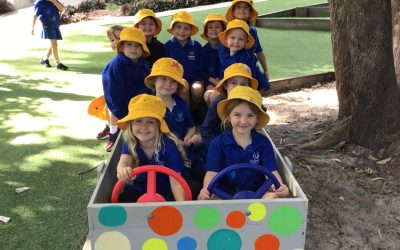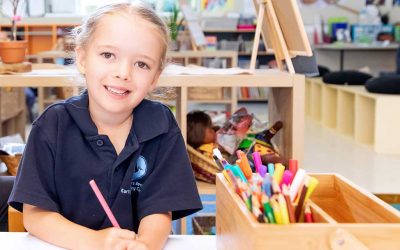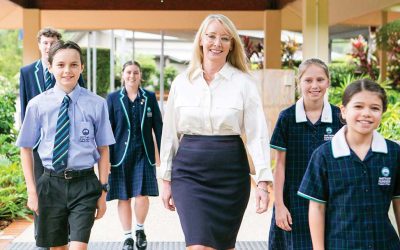When we think about ‘effort’, few people boast that it comes naturally. It takes effort to exercise on dark and cold winter mornings. It takes effort to shop for, cook and feed our children healthy food. It takes effort to remain calm and be kind to others and ourselves! And, of course, it takes effort to learn and to improve.
While some would argue that good learners are natural learners, academics and educationalists agree that ‘talent’ is not essential for success. Yes, natural ability helps with learning, but effort is the key to ensuring that students grow and succeed.
As Winston Churchill observed, “Continuous effort – not strength or intelligence – is the key to unlocking our potential.”
So, how do we help our children push beyond their comfort zones to feel confident about their abilities? And, importantly, how do we encourage our children to make more of an effort – whether they are learning at school, playing sport, forming healthy friendships or eating their greens?
American professor and co-founder of the Institute for Habits of Mind Arthur Costa urges parents and teachers to help children develop positive ‘dispositions’, also known as habits of mind or characteristics, that are essential for expansive learning, such as persistence, risk-taking and responsibility. Costa warns that without these dispositions, “… students are not able to become the productive, innovative problem solvers for our economy and our democracy.”
Putting kids effort into practice at school
Matthew Flinders Anglican College at Buderim on the Sunshine Coast is one such school that is taking the concept of effort seriously.
Inspired by the leading work of Costa and other education leaders, Flinders’ Primary School of 550 students from Prep to Year 6 recently developed criteria called the Approach to Learning, which identifies five key dispositions for ensuring effort leads to successful learning.
Flinders Head of Primary Trudi Edwards explains Flinders is committed to helping its students understand that effort + learning = success.
“We explicitly teach the qualities which enable each student to give of their best effort: persistence (sticking to it), responsible risk-taking (having a go), taking responsibility (stepping up), responding to feedback (taking it on board) and committing to shared goals (we are all in this together).
“That’s why our teachers all use the Approach to Learning criteria with our students to explicitly teach the qualities that enable each student to give their best effort.
“It’s empowering for our students to see what effort actually looks like and how they are in charge of their learning.”
Demystifying the concept of effort
Flinders Primary Head of Learning and Teaching Debbie Planck said the Approach to Learning helps parents, teachers and students demystify the concept of ‘effort’.
“We want all our students to know that they can experience success in how they approach their learning and to know that effort is the key,” Debbie says.
“If they approach learning with persistence, confidence, responsibility and risk-taking, they’re more likely to become successful learners.
“Our aim is to guide our students out of their comfort zones as learners so they feel confident about challenging themselves and growing.”
Flinders Year 4 teacher Sarndra Street agrees that it is vital for children have a healthy view of their abilities and realise they are capable of changing their habits for the better.
“It is worrying to hear students say, ‘I’m always messy’, ‘I never finish things properly’, or ‘I’ve always been disorganised’,” Sarndra says.
“Those views are unhelpful to children because they negatively affect their self-belief and can hold them back in life.
“With our Approach to Learning criteria, it’s wonderful to see students’ eyes light up when they realise, for example, that they won’t always be scared of taking risks; they can actually become more confident so they reach a point where new learning challenges don’t feel scary at all.”
How does this help students?
Year 4 Flinders student Jasmine Nathan explains how the Approach to Learning criteria has helped her in class.
“My strength is being organised and taking responsibility for my work. It feels good to know that is an important habit for learning,” Jasmine says.
“But I used to struggle with taking on feedback. I would think straight away that I had tried my best, and that was all I could give. But now I can see that feedback just means that my teacher or parents are trying to help me to improve.
“Based on my teacher’s feedback, I’ve started using paragraphs in my writing, and I can see how my stories and reports are improving. I love writing and using my imagination. It feels like I’m in a whole new world.”
Flinders’ five-criteria Approach to Learning to help students improve their effort
- Responding to Feedback (Take it on board): Sometimes it’s hard to hear feedback, but if you can accept that feedback is help, and make the improvements, then you will continuously improve.
- Persisting (Sticking to it): Can you stay on task and see your activity through to the end? Learning can be tough at times, and you may feel like giving up or doing mediocre work, but if you persist you will feel more confident next time you try something that is tricky.
- Responsible Risk Taking (Have a go): When you try something new, you may expect to be good at it straight away. But it’s OK to make mistakes when learning. Keep practising and never give up! Soon you will improve and become a responsible risk-taker and a better learner.
- Taking Responsibility (Stepping up): When you work in a group, make sure you contribute your ideas and help to finish tasks so your group can achieve its work. And when you’re working alone, keep up the great work and take responsibility for your own learning, time management and organisation.
- Commitment to Shared Goals (We’re all in it together): You are an important part of your class, your school, your family and your community, so make sure you are a willing participant and help to encourage and assist others to achieve your shared goals.
Related Stories
Students at Matthew Flinders Launch New Children’s Book on the Sunshine Coast
Flinders Year 12 students shave for a cure for blood cancer
Innovative Years 5 and 6 Precinct opens its doors at Flinders
Servicing Brisbane, Gold Coast, Sunshine Coast and beyond, Kids on the Coast is an online guide for parents with kids events, attractions & things to do with kids, schools and education, school holiday guides, health & wellbeing for families, parenting and lifestyle news located on Gold Coast, Sunshine Coast & Brisbane, QLD.





